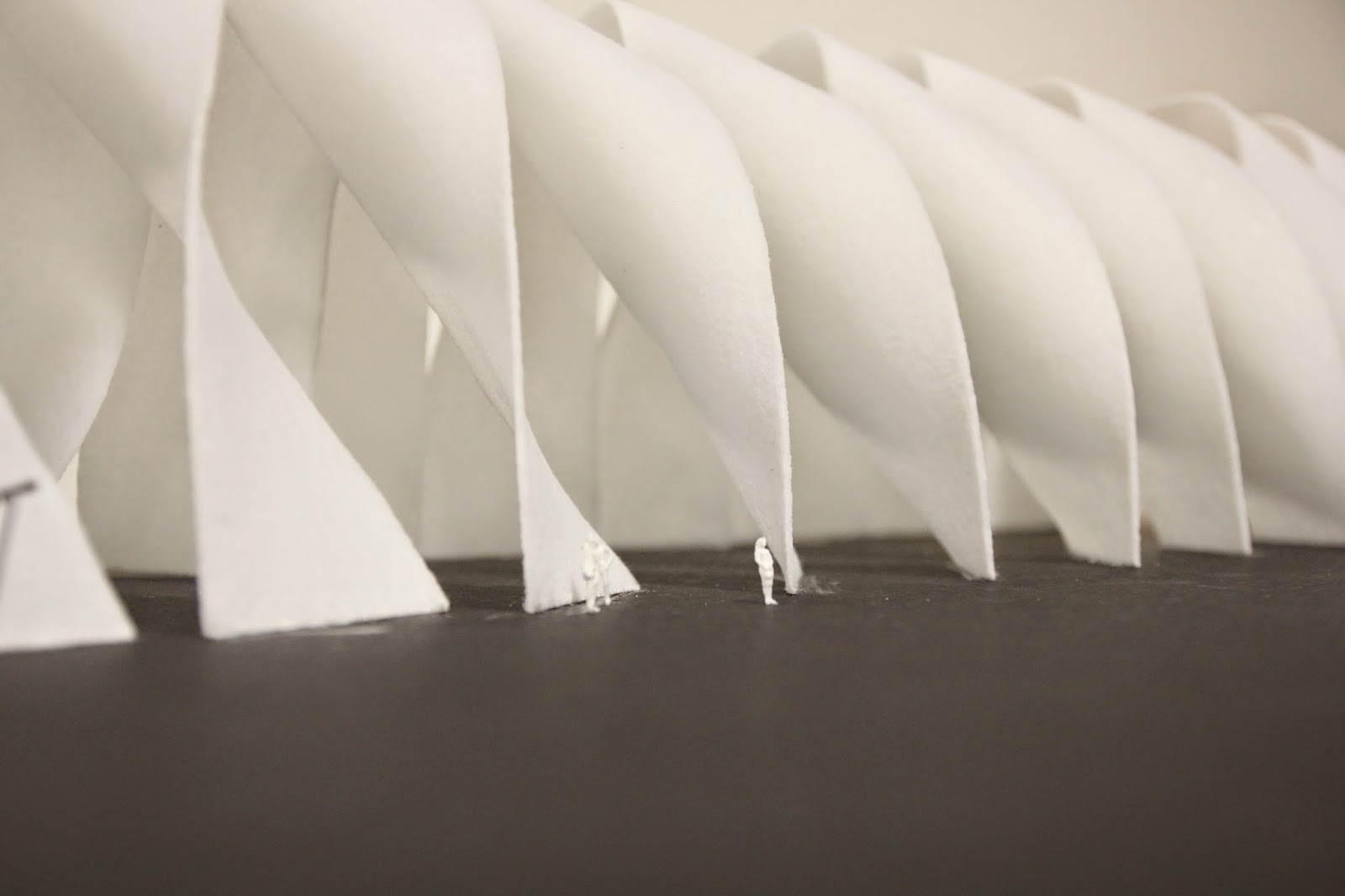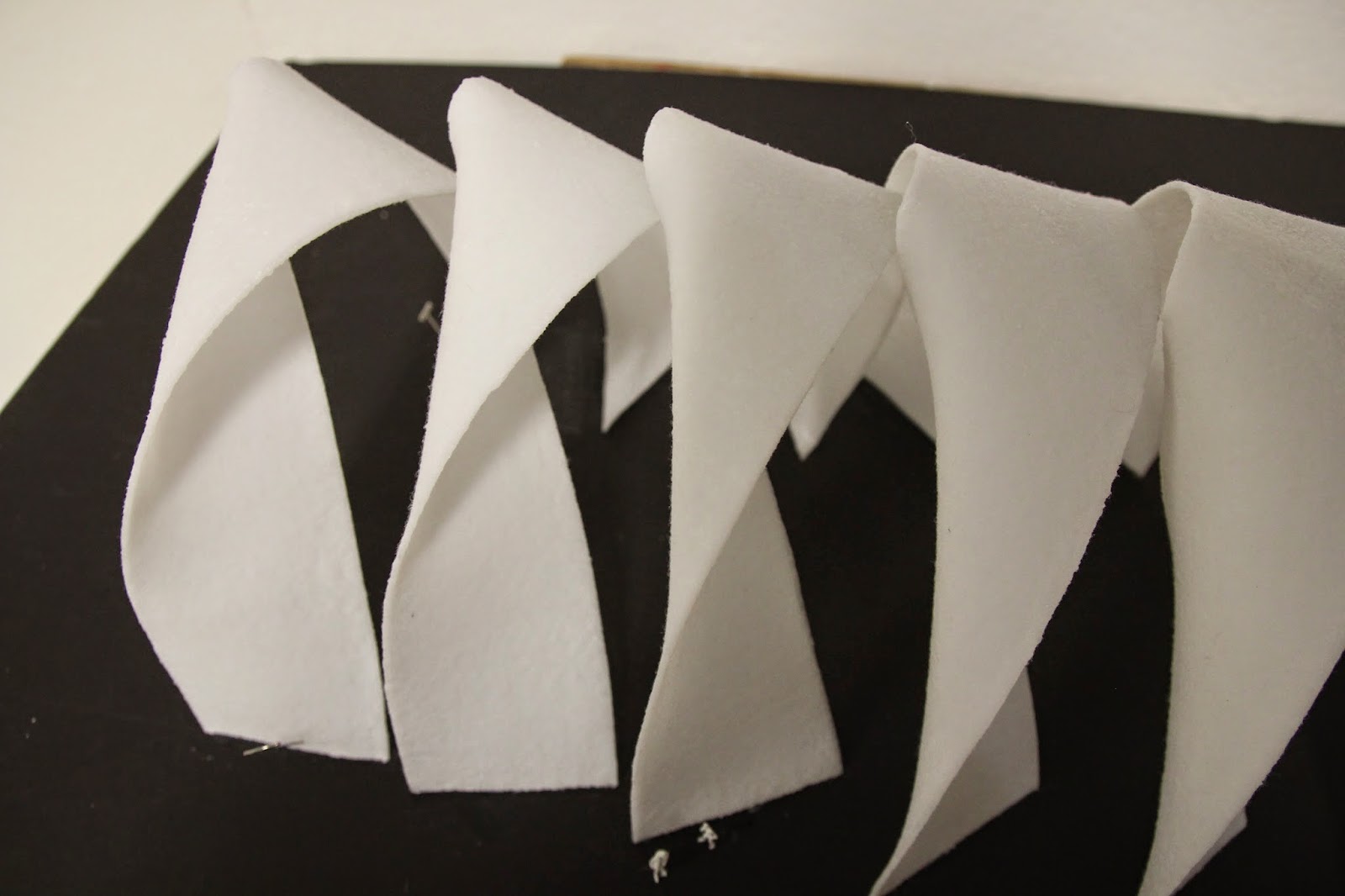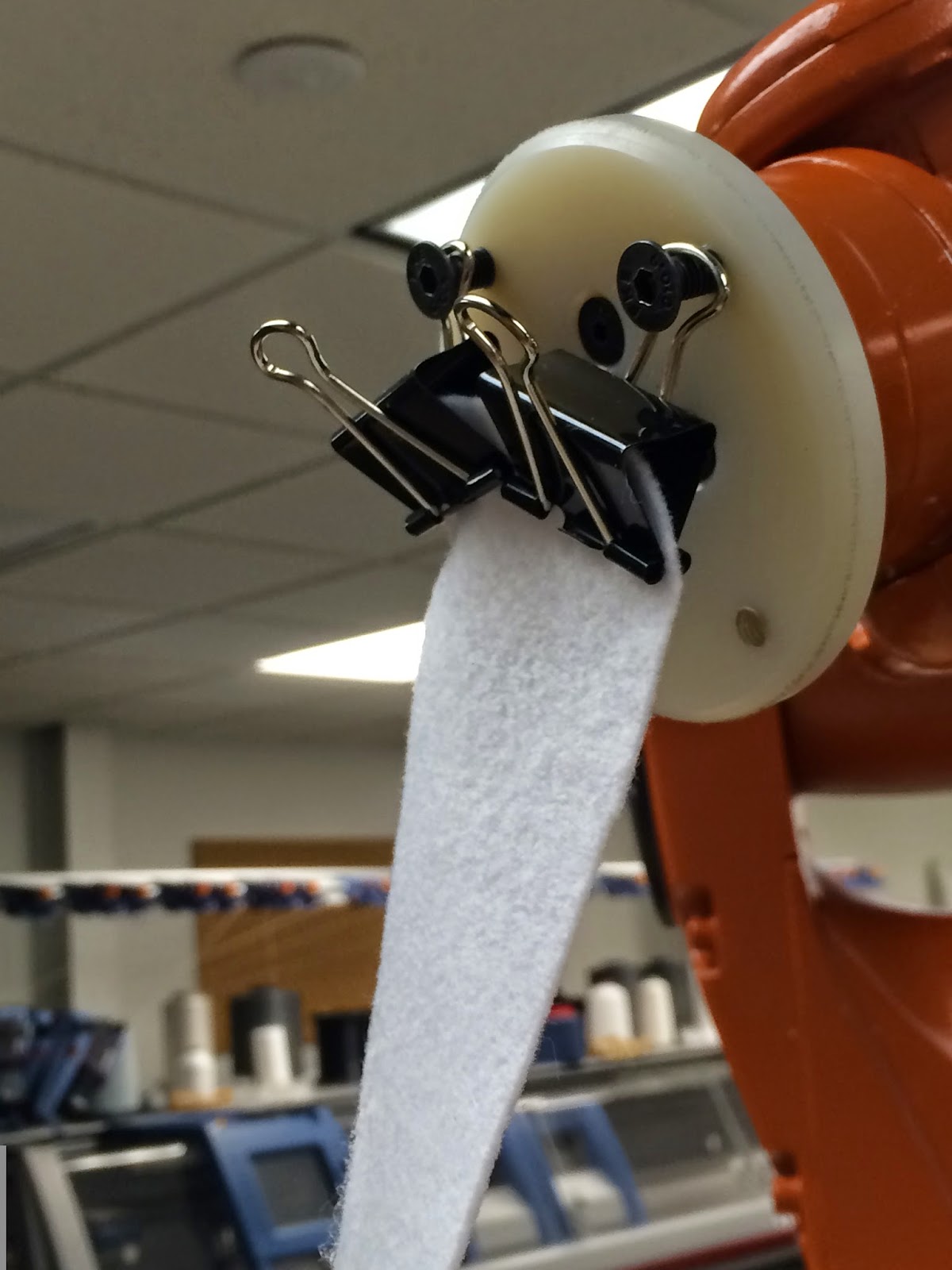Wednesday, December 3, 2014
Tuesday, November 18, 2014
Monday, November 3, 2014
Assignment 8 - Catenaries
Base Curve was chosen then grasshopper script was written to pick up the midpoint by dividing point then call CullNth to pick up the midpoint
Orientation point is made to be on the curve perpendicular to the base curve.
Wax melted in Crock Pot
Pinning and Gluing
Friday, October 31, 2014
Reading 005_Lena Pfeiffer_Authoring Robotic Processes
This article Authoring Robotic Processes, by Gramazio and Kholer, discusses the shift from digitally designed architecture to digitally constructed architecture. It is no longer a relationship between "dematerialization and pure form" but of the construction of those forms from the digital realm into the 3D. With the introduction of digital fabrication, there are fewer limitations on the possibilities for construction. Through computational logic and material realization robots will be able to shift the parameters of design and fabrication. But it is important to use our design to inform the work of the robot and not the other way around, or else we will not be expanding our view of design. The robots must be approached as a tool for furthering design, not a limitation. One of the main advantages of the robot that gives it an advantage over many digital fabrication devices is its manual dexterity. This is the ability to be multi-functional because it is, in some form, "generic". This allows for endless tools to be used on the robot, such as the ones we used and constructed in class. This allows for options of building, placing, filming, painting, and so on, which in turn gives us very well rounded understanding of material and structure.
Scale is another factor that plays into the use of the robot. The robot arm can be placed on track and given a wider range of motion, but that can only take its motions so far. One project Granazio and Kholer discuss is their fly quadrocopters. The next step is to figure out how to apply this to full scale construction.
Scale is another factor that plays into the use of the robot. The robot arm can be placed on track and given a wider range of motion, but that can only take its motions so far. One project Granazio and Kholer discuss is their fly quadrocopters. The next step is to figure out how to apply this to full scale construction.
Thursday, October 30, 2014
Monica Reading Response 007: Retooling for Mass Markets
Tom
Verebes, an Associate Professor at the University of Hong Kong, speculates
about the use of robots in construction in his article, “Retooling for Mass
Markets in the 21st Century”. The title of his piece responds to a
quote by Thomas Kuhn, which states that retooling in manufacture is an extravagance
only necessary when a crisis demands it. Verebes argues that this crisis is
found today in China, where 10 million new urban inhabitants require housing
each year.
Because
of the urgent need for housing in China in what the author calls “The Asian
Century”, standardized building types are created for efficiency’s sake. The
approach to building threatens to turn Chinese cities into homogeneous environments
reminiscent of Modernist planning ideals. Robotic fabrication is a possible
solution for creating customized and unique cities, rather than systematic,
mass-produced ones.
Research
in robotic fabrication has been happening in elite architecture schools for
some time now, and these techniques have recently been adopted by some
entrepreneurs. However, although the technology is available and can be applied
at different scales, there are still many hurdles to overcome before robots are
used in the typical construction process. From a standpoint that considers only
time and money, it is impractical to change the current construction tools and
move robotic fabrication into the construction site. Instead of this, robots
should be used in conjunction with existing building technologies, not just to
save time and create efficient buildings, but also to create unique, beautiful,
and non-standardized cities for the world’s growing urban population.
Reading 007: Retooling for Mass Markets: Hillary Davlin's Response
"Retooling
for Mass Markets", written by Tom Verebes, poses a counterpoint for the
implementation of robotics in the 21st century, or as he terms it,
the “Asian-Century”. Today, robots have
slowly been integrated into architectural design, practice, discourse, teaching
and researching, but have hardly been considered in the physical building or a
contemporary city. Verebes argues that robotics poses great opportunity to aid
in the population demands across East Asian today. While robots may reduce both
time and money through the production of high-rise residential buildings, there
is a concern that robots may not be used to their full potential in order to
create variation rather than similar architectural typologies. Robots have been associated in the 20th
century with a monotonous, Fordism ideology, where repetitive products are
produced in a timely manner. Although
robots today have the same standardization ability, there is opportunity for
diversity through different tooling and robotic applications.
Customizing different robotic tools
has the ability to transform a city, allowing for a vast differentiation of
architectural high-rise typologies, while still doing so in an efficient
time. The question at this point becomes
not how robots can change urban skylines, but if they will be used to do
so. In the article, Verebe reiterates
Kittler’s stance on new technological media, stating that, “new media does not
make old media obsolete; they assign them other places in the system” (p. 129).
Robots, in this case, will most likely be combined with old building techniques
in order to address housing issues of the 21st century. The
responsibility thus relies on architects, developers, and city officials, if
the potential of robotic retooling will create a unique and successful city
skyline, or a dreary, monotonous urban fabric for the future population to live
within.
Tuesday, October 28, 2014
Monday, October 27, 2014
Thursday, October 23, 2014
Assignment 7.2 Jenga Wall
addition of script (1): adding "A+B" to move the location of all the points to the desired location on the table top.
addition of script (2): finding centroid of the top surface of the jenga block as the point to be picked up from the table top.
Addition of script (3): bypassing the script for generating the block. extract the points and resequence them to feed to the Gripper script.
The simulation of the Mitey.
We failed to finish the stacking since we ran out of robot time. Other issues was failing to assign the Tool so we decided to use the Pinhead tool instead (by copying all our codes except the tool into Pinhead's grasshopper file). Everything went quite smooth after that but since the tool is a little bit different we were spending most of the time calibrating it so we can use our jenga block script with the pinhead gripper tool.
Our blocks
Our work surface. This was so the pieces would lay flat on the slightly uneven table.
Placing a block. We had trouble changing the vertical height to account for the work surface.
Tuesday, October 21, 2014
Reading 006: Changing Building Sites - Hillary Davlin's Response
“Changing Building Sites”, written by Thomas Bock and Silke
Langenberg, explores the long history and potential of robotic automation on
the building site. Beginning n the 19th century, specific machines
have been necessary in aiding construction processes for new materials
(concrete, steel etc.) in the industrial revolution. For example, one of the
biggest architectural feats of the century, the Crystal Palace (built in 1851),
required new steam powered machines that could hold the large cast iron beams,
thus changing the physical building site. Progressing into the 20th
century, the destruction from WWI and WWII pushed the need for new construction
machinery as housing shortage reached an all-time high. Massed produced, prefabricated components
become the main mode of construction, changing machinery and building site even
further.
Prefabrication
in buildings and building systems advanced even greater during the 60s and 70s.
Standardized systems and mass production enabled time and cost savings, yet
again shifting the paradigm of building elements and site. During the 70s,
Japan hit a population and housing boom. Using similar mass production of building
systems, Japan adopted an automation system that replicated more of an assembly
line than actual automation. Robots slowly became introduced not only into
system production, but also into construction firms for the purposes of
demolition, surveying, excavation, paving, tunneling, welding, etc. on site. As
robots have transitioned from the factory to the construction site, it has been
argued that building sites are more successful if they are designed similar to
factories, where robots are fully integrated into the future production of a
home.
Monday, October 20, 2014
Assignment 7 - Jenga
grasshopper script 1 for the wall
We tried to isolate the grasshopper script that contains the gripper control from the last assignment. But then we failed to figure out the script for the sequence of picking up the bricks from bottom layer to top layer.
Brick Wall from different views
Gripper Tool
Subscribe to:
Comments (Atom)





















%2B-%2BRhinoceros%2B(Educational)%2B(64-bit)%2B-%2B%5BPerspec.jpg)























.JPG)
.JPG)
.JPG)




